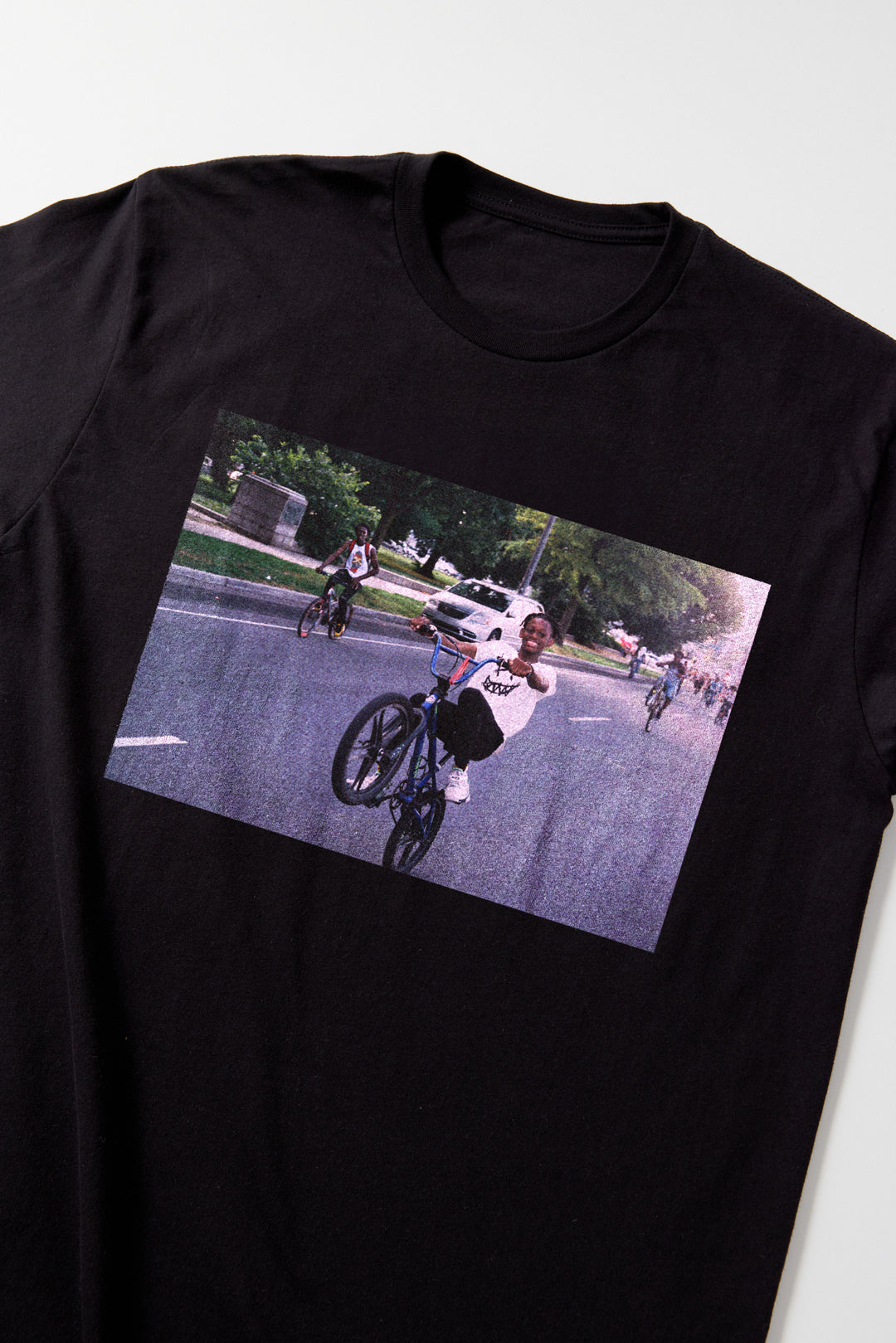Open Casket: The Negro Artist and the Racial Mountain
WORDS: DEVYN SPRINGER | ART: FAYE ORLOVE
How do I exist in an art world that asks me to make a statement based on my sociopolitical situation, yet simultaneously attempts to pacify and re-work that statement to fit into the molds of whiteness?
How do I exist in the small space between tokenization —being hailed as the Black artist hanging on the walls of certain galleries, feeling like my body of work will one day become just a checkmark on a diversity checklist some white man in a designer suit is mulling over— and not being recognized at all? How do I exist circumnavigating the need to reconcile a blossoming Black excellence or an artistic ability and depth that can only come from a certain fortified racial mountain, with the work that dominates the walls which are reactionary to whiteness, and hangs next to white mediocrity itself? These are just a few of the questions I had resting on my chest upon leaving artist Daniel Arsham’s “Hourglass” exhibit in Atlanta, which is available for view March 4 to May 21 at the High Museum of Art. Moreover, these are just a handful of questions that often get caught in my ribs like pieces of popcorn in my teeth -- how to exist as a Black queer Muslim artist, not just in Trump’s Amerika but in the art world at large.If Emerson said beauty is its own excuse for being, then white art more times than not is its own reason for filling galleries.I often feel stuck between the need to be political based on the inherently politicized nature of my own identity, and the desire to just create art for the sake of beauty itself. And as I walked through Arsham’s exhibit looking at his renowned style of quartz-crystal sculpture (in this particular installment they are shaped as various sports balls, such as Spalding basketballs) I wonder how it feels to have the ability to extract, gauge, or even deny your artwork of a political identity. I was asked to write a commissioned review of Arsham’s Atlanta exhibition for a well-known publication and after viewing it, I declined. I was approached based on my knowledge of Black art and was told my perspective on his show would be slightly more critical and offbeat than others. However, I declined because, well, I simply didn’t like it. There comes a time when an artist’s name, or an artist’s namesake rather, becomes bigger and more intriguing than their art, and that was the sense I gathered as I walked through Arsham’s exhibition. There seems to be some strange fixation on the disparities in talent, effort, and artist’s placement in the art world between white and non-white artists; that was the conclusion I came to. That Black artists like myself work three times as hard to have our work shown for a third of the time on walls in galleries half as large as those that happily house mediocre white artists. This is not a testament to Black resilience or demanding of space but of white artistic hegemony and its effects.
Should we as Black artists approach our mediums solely within the confines of race and politics, or can we make art for the sake of art?Arsham’s work, which has been featured in several magazines and hailed as groundbreaking, speaks to no particular audience, is made with no one other than monied-whites in mind, and lacks a political intentionality. Would I, or Philadelphia visual artist Shikeith, or Harlem art revolutionary Faith Ringgold ever be allowed to fill the walls of large, well-monied, predominantly white galleries like the High Museum of Art in Atlanta had we pieced together a similar exhibition? No, because in modern history Black artists have rarely been allowed the artistic freedom of letting their work exist beyond the boundaries of the politics which confine them. And I wonder when our talent has been allowed to exist on its own, quietly growing muscles and birthing its own world, in ways that do not demand grand statements on a particular socio-political climate. If Emerson said beauty is its own excuse for being, then white art more times than not is its own reason for filling galleries. Outside of spaces carefully curated for Black eyes by Black hands, when has Black art been allowed to be its own excuse for being? I walked back to my car from Arsham’s exhibition and was decidedly convinced that his work, which is hailed for challenging notions of space and time, was its own reason for being in that gallery. However, when I challenge space and time as a Black queer artist, I am not able to remove myself from that space and time.
Whites don’t want Black artists and Black art, they want a handful of Black artists that align both with the commodification of Blackness and the illusion of diversity that galleries need in 2017 to exist.The racialized disparities in the art world are rife and often unavoidable. A little Black child who grew up in Bowen Homes in Bankhead, Atlanta, is likely to have a less financially stable upbringing than a little white child who grew up in Buckhead, Atlanta. That little Black child is then likely to go to a school with much less funding, which has a lacking or even nonexistent art department. This means that it is likely to assume that little Black child had few outlets to indulge in, explore, cultivate, and admire artistic skills, compared to the little white child who, thanks to class location and racial lines, is likely able to attend a school where visual, musical, and theater arts are not only offered but well-funded and respected as well. Within this context, is it any surprise that far less of those little Black children grow into well-known artists than those little white children? And is it any surprise that Black artists must grow into laborers skilled in the art of waging race as an artistic selling point? Every piece of art I create feels like it’s meant to be a part of some race war, or gender conversation, or socio-religious conversation, all of which I exist within without my own consent. We grow into artists whose work is inextricable from our socio-political conditions because the art world hardly values us any other way. [gallery ids="1488,1484,1502" type="rectangular"] I think of my own most recent solo exhibition in Atlanta, “Interactions / Blackness,” and I think of the uphill battle that it was. Opening night, I attracted a crowd of almost 200 people into the small gallery space only meant to hold 75 guests; all people who came to see my show about how the world interacts with Blackness. I mixed poetry, photography, painting, and performance together to showcase the world of a Black artist drowning in a sorrow that stems from a lack of resources and lack of support. I set the entire gallery up with the help of just one other person, hanging every picture from the ceiling individually; a two-day process. I put together an entire art show, filled with spoken word poets and various musical performances on opening night, on a budget of a humble $156 total. All the while knowing, after all the hard work and success from that show, my art will probably never exist in the same way as Arsham’s is allowed to. This conversation on space, race and uphill battles is not new or unfamiliar. In 1926 world-renowned writer and activist Langston Hughes wrote the ever relevant and important essay, “The Negro Artist and the Racial Mountain.” In this essay, Hughes seeks to ask and answer many of the same questions that have kept me up at night. Should we as Black artists approach our mediums solely within the confines of race and politics, or can we make art for the sake of art? Moreover, how should we not ask -- but demand -- to be viewed? How must we contrast, or navigate, our own existence against the structures of respectability put in place?
As Hughes puts it in his essay, whites wish to create a “Nordicized Negro intelligentsia” which exists to walk closely behind white artistic domination, not challenge or dismantle said domination.If whiteness is a structure that works on your side, you fall to a certain side of this conversation. You are interested in creating beauty, often detached from the realities of your own positionality, and see art as a subjective battleground. If whiteness is a structure that works against you, you see art not as a battleground, but as a means of survival. Our work is experiencing a cycle of vain and shallow appreciation; white galleries and white dollars are continually looking for a single Black artist to paint a picture of Black Amerika’s entire realities for their walls. Whites don’t want Black artists and Black art, they want a handful of Black artists that align both with the commodification of Blackness and the illusion of diversity that galleries need in 2017 to exist. As Hughes puts it in his essay, whites wish to create a “Nordicized Negro intelligentsia” which exists to walk closely behind white artistic domination, not challenge or dismantle said domination. In a statement that rings in my ears daily, Hughes states “An artist must be free to choose what he does, certainly, but he must also never be afraid to do what he must choose.” I think of what choices Daniel Arsham has to choose in his positioning of his self and his truth, or if he has to at all. Is Arsham, like so many other popular white artists out there, even aware of the role his own positionality plays in his art, and how the difference in hurdles due to his positionality as a white man matters in comparison to someone not able to uphold standards of whiteness. That a white artist named Dana Schutz can paint something as horrifyingly intimate to the Black community as the iconic image of Emmett Till’s beaten body shows the complete lack of boundaries whiteness encompasses. That a white woman, existing within the historical context that understands it was also a white woman who got Emmett Till killed in the first place, can feel justified in moving her paintbrushes to create that image exposes the nature of whiteness in the art world altogether. And moreover, that Black artists’ resistance to and protests of Schutz’s piece have been said to have started a “debate” and “conversation,” in the art world shows we have a long way to go. When Black artists’ transgressions, resistances, shoutings, and fists are seen as mere conversational, casual art world debate topics, you have to ask yourself: how far up the racial mountain have we really climbed?

